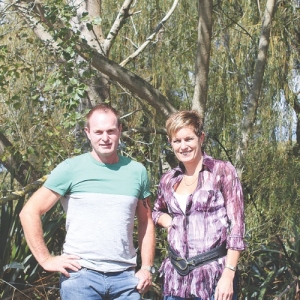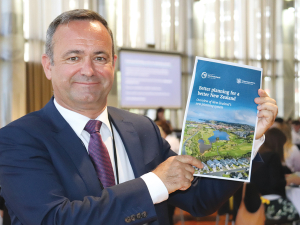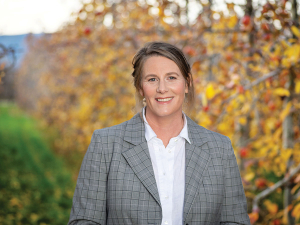O’Sheas farm a total of 233ha, milking 380 cows at Kokopu, 18km south west of Whangarei. These produce an average of 1565kgMS/ha/year. The farm produced a record-breaking 1698kgMS/ha in the 2011-12 season.
The property is broken into a 93ha owned dairy platform with 44ha owned runoff area, and the balance of 96ha is leased. No supplements are made on the dairy platform; all supplements come from the runoffs and leased land.
The decision to have a smaller dairy platform with extensive support areas stems from the logistics of location and contour of the runoff area and lease blocks. The farm is essentially L-shaped with the dairy platform and milking shed at one end of the property and the remainder stretching along and across a busy road.
The 93ha dairy platform requires cows to walk only 1.5km to the shed at most. The dairy platform supports 4.1 cows/ha, which Charmaine says wouldn’t be possible without the extensive support blocks.
A total of 308 tonnes of maize and 210 tonnes of grass silage was imported from the support blocks; palm kernel was also fed during the 2011-12 season
Supplement made up 36% of the herd’s diet last season; pasture made up 12.6 tons/ha DM eaten of a total of 19.6 tonnes DM/ha eaten. The result is the herd was able to produce a total of 410kgMS/cow last season, a production in excess of their own liveweight.
In fact, the O’Sheas’ farm is still one of the few spring calvers in Northland that are yet to dry off. The farm is likely to finish 9% from where it was last year, Shayne says. “The feed is there so it’s worthwhile milking. Currently they’re getting 12kgDM/cow a day in supplement because there’s bugger all in the paddock.”
The contest judges made special mention of the farm’s efficient effluent system.
The property uses a three-pond system that services the feed pad and the cowshed. Effluent from the shed is washed into a 1673m3 pond which pushes cleaner water into a second 1653m3 pond. This is pumped into a flood wash tank used to clean excess effluent off the feed pad. Water used to clean the feedpad gets flushed through a third pond which captures the sediment and allows material with a higher volume of water to be washed back into the first pond.
Liquid from the first pond is spread over 24% of the property through hydrants and Hi-tech sprinkler pods with the sediment trap being emptied out twice a year and spread over another 2% of the property with a muck spreader.
Shayne says while it means less water is used, filters are necessary on the pond end of the irrigation system. “It’s a simple system but it works. It won’t take long to pay for itself because it is building up organic matter on a part of the farm with lower fertility.”
Besides this the farm is fertilised three times during the year: spring, summer and early autumn. On the dairy area in the 2011-12 season the O’Sheas applied 37kg/ha phosphorous, 46kg/ha potassium, 23kg/ha sulphur, 18kg/ha magnesium and 97kg/ha calcium.
They also applied 183kg/ha nitrogen in the 2011-12 season, Shayne saying nitrogen gets put on as either Sustain, Rapid S, or Phased N depending on the time of year to prevent volatilisation (evaporation). “It allows us to apply it in all conditions.”
The farm employs two full time staff and a relief milker, allowing workers time off when they need it, says Shayne. “All staff are encouraged and supported to complete Ag ITO training courses.”
Shayne handles staff management and day to day running, Charmaine focuses on financial planning and management.
















